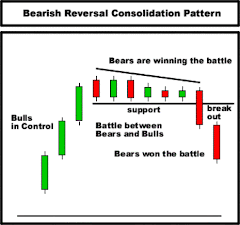1. What is day trading?
This is like regular trading in the stock market, involves the buying and selling of stocks, options, currencies and futures in the financial market with the aim of making a profit from the difference between the buying and selling price. However, it differs from the regular trading in that the positions are traded within 24 hours between the openings and closing of the market; they are rarely, if ever, held overnight.
Historically day trading as an option was available to limited financial companies such as banks. This was mainly due to the fact that these companies alone had access to the market data as also to the exchanges where the stocks were traded. The advent of technology, however, has changed the picture significantly. Individual traders too have access to the data and therefore, they can also make the same trades.
2. What are the different ways of day trading?
Depending on the individual's personal trading style, it can be done through:
• Short-term trading
• Long-term trading
Short-term trading: As the name itself suggests, in short-term trading, positions are held for either a few seconds or a few minutes.
Long-term trading: In long-term trading, the positions are held for a period ranging from a few hours to the entire trading day.
Trading styles can also be classified on the basis of the direction of the current price movement of the stocks, currencies, or futures. Accordingly, these styles are:
• Trend trades
• Counter-trend trades
• Ranging trades
Trend trades: Day traders buy when the price of the stock goes up and sell when it goes down. In other words, they trade in the direction of the movement of the prices.
Counter trades: According to this method, traders go back and forth between two prices; this generally happens when the market is moving sideways.
A day trader, depending on his requirements, can choose between any one of the styles or choose a multiple combination, depending on the prevalent market conditions. No matter which style you choose, one thing remains constant: you have to have a thorough knowledge of the financial market and an ability to make quick decision in order to reap the profits.
Finally, trading can also be classified base on the number of trades a trader makes in a day. While there may be traders who make their trades throughout the day, there may be others who wait for the best time to trade, and in some cases, make only a single trade in a day.
No matter how positions are traded, or how many trades are made in a single day the bottom line is to reap the maximum profits during the day.
3. Which are the markets for day trading?
A person can trade in stocks, currencies, options or futures. Accusingly, the financial markets for trading are: stock, currencies, options and futures. These include market based on stock indexes such as Dow Jones and the DAX, currency exchange rates such as the Euro to US Dollar exchange rate, and commodities exchange rates such as gold and oil. The day traders can access these markets through direct access brokers that provide a direct access to the exchange, and a faster trade execution at lower costs.
What are the tools required for day trading?
Given the time limited associated, it makes sense to use some tools to analyze the market and the performance of the companies whose stock you are trading in. In modern times, it is mostly electronic with the exchanges being run by computers and accessed by the individual players through the Internet. This makes it possible for day traders to operate from anywhere in the world by using a few tools such as a computer, Internet, software such as charting software and a telephone.
Open an account with sogoinvestIf you are new to sogoinvest: Online stock trading investment
Article Source: http://EzineArticles.com/?expert=Amit_Malhotra
| Free Technical Analysis Tutorial |
| Hot Stock Picks |
| Stock Market Tips |



Day Trading Basics
Subscribe to:
Post Comments (Atom)





No comments:
Post a Comment